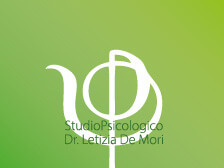DSA, BETWEEN YESTERDAY AND TODAY

DSA between yesterday and today
DSA
Today Specific Learning Disorders ( SLD ) represent an important source of unease with which children, families, educators, psychologists and pediatricians have to deal. Difficulties in reading, writing and calculating are widespread and are often associated with an important negative implication on an emotional, cognitive and social level (Cornoldi, 2007).
I DSA are a fairly recent category, this it does not mean that once they did not exist but probably that there was not enough information: the first researches in this area date back to the 50-60s of the last century, in which some clinical definitions were formulated relating to a set of disorders in which school learning was penalized without the intelligence being compromised. I DSA , do not affect the Intellectual Quotient (IQ), which can be perfectly in accordance with or even above, but they are operating characteristics that can cause discomfort to the person. To confirm it should be noted that the likes of Einstein and Tesla presented Specific Learning Disorders.
Many children and young people during their schooling experience moments of particular difficulty in some learning, these difficulties can manifest themselves with different degrees of significance, affecting on single disciplines and consequently on general academic performance. This can lead to problems in adapting and lowering self-esteem which are mistakenly interpreted as lack of commitment, laziness or listlessness: the classic statement "he is intelligent but can do more". This is why it is essential to distinguish between difficulty and specific disorder: the first refers to any general difficulty of the student in the school environment, it is not innate, it can be modified through targeted interventions; DSA, on the other hand, provides for the presence of a more specific deficit, which must be investigated and diagnosed by specialized clinicians, it is innate and resistant to intervention (L. Cisotto, 2012).
I DSA can be: dyslexia (disturbance in reading), dysgraphia (disturbance in the mechanism of writing), dysorthography (disturbance in the level of errors produced) or dyscalculia (disturbance related to mathematical skills) depending on the learning area deficient. Diagnosis at this point is fundamental as it allows students to accompany students on a path that provides for the enhancement of their strengths and which at the same time goes to work on the weaknesses. A collaboration between School, Family and Professional will therefore allow the
creation of a PDP (Personalized Didactic Plan), while the student can follow a targeted cognitive rehabilitation , and custom built together with the professional.Dr. Bianca Bagolini
Magistrale IUSVE
Clinical and Community Psychology





